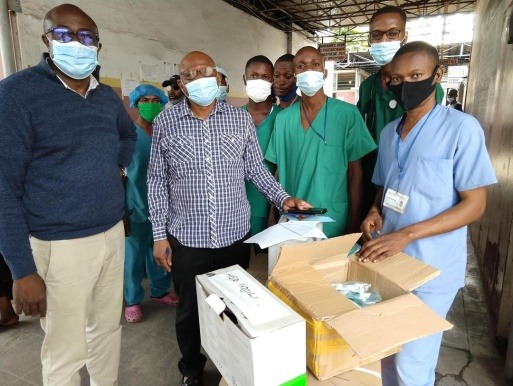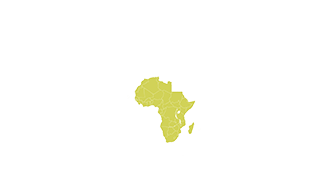
![[world map]](https://internationalministries.org/wp-content/themes/blankslate/images/IM_map_global.png)

 Democratic Republic of the Congo
Democratic Republic of the Congo
Last week Mano Ntayingi and I drove across town to participate in a “photo op” celebrating improvements to two health centers funded by UKAID and carried out by IMA World Health. In my role with IMA I supervised a group installing solar power to see it was done correctly. Mano plays a much greater role. He is coordinating the UKAID’s COVID-19 response through IMA that supports hundreds of neighborhood health centers and hospitals in four provinces including Kinshasa, the capital and most affected province.
 |
This UKAID funded project includes major renovations for strategically important health centers, providing staff with training, personal protection equipment, and other well-known Covid fighting materials. These include pulse-oximeters to clip on fingers, and life-saving oxygen concentrators when patients present with low oxygen saturation levels, a technology which is RARE in Congo hospitals. Since oxygen concentrators require electricity, that’s where the solar systems came in.
|
|
|
The air we breathe is 78% nitrogen, 21% oxygen and the remaining 1% contains lots other gases of which carbon dioxide is 0.033% (and rising). An oxygen concentrator works by running this air at high pressure through a cylinder filled with tiny beads of a material that absorbs nitrogen so that the air coming out is 99% oxygen. Pretty nifty. |
Last week, after the UKAID staff inspected the facilities and photos were duly taken, Mano and I remained to get signatures on the paperwork required to turn over concentrators, supporting materials, and solar energy systems at the Mbankani health center. Then, Mano had an additional stop on his schedule. He had equipment to donate to the large Ndjili hospital that supports Mbankani and twenty or more other neighborhood health centers.

|
|
The director of the Ndjili Hospital received us gracefully. As his staff unloaded equipment from our car,he told us that since the Covid outbreak, oxygen consumption at the hospital went from a dozen bottles a month to over 50. Hence the concentrators would help greatly to lower costs. He also said that they have seen an unprecedented increase of deaths mostly coming from homes that can be associated to Covid-19. Mano passionately explained to me how many patients who die at home when Covid causes respiratory distress, would be saved if the neighborhood health centers could provide life-saving oxygen. Hence, using UKAID funds, he was equipping forty health facilities with concentrators and as funds allowed, backup solar and battery power systems.
|
Mano is typical of the several dozen Congolese professionals with whom I work at IMA. He has a degree in Medical Informatics from Johns Hopkins and has intentionally chosen to work with our faith-based organization rather than seeking a better job elsewhere. He has been part of our team since I came to Congo in 2004. I enjoy working at IMA and was gratified to learn from Mano how my rather unexciting oversight of contractors would have a part in saving an untold number of lives in Kinshasa.
Thank you for your part in making our presence here possible.
Wayne Niles